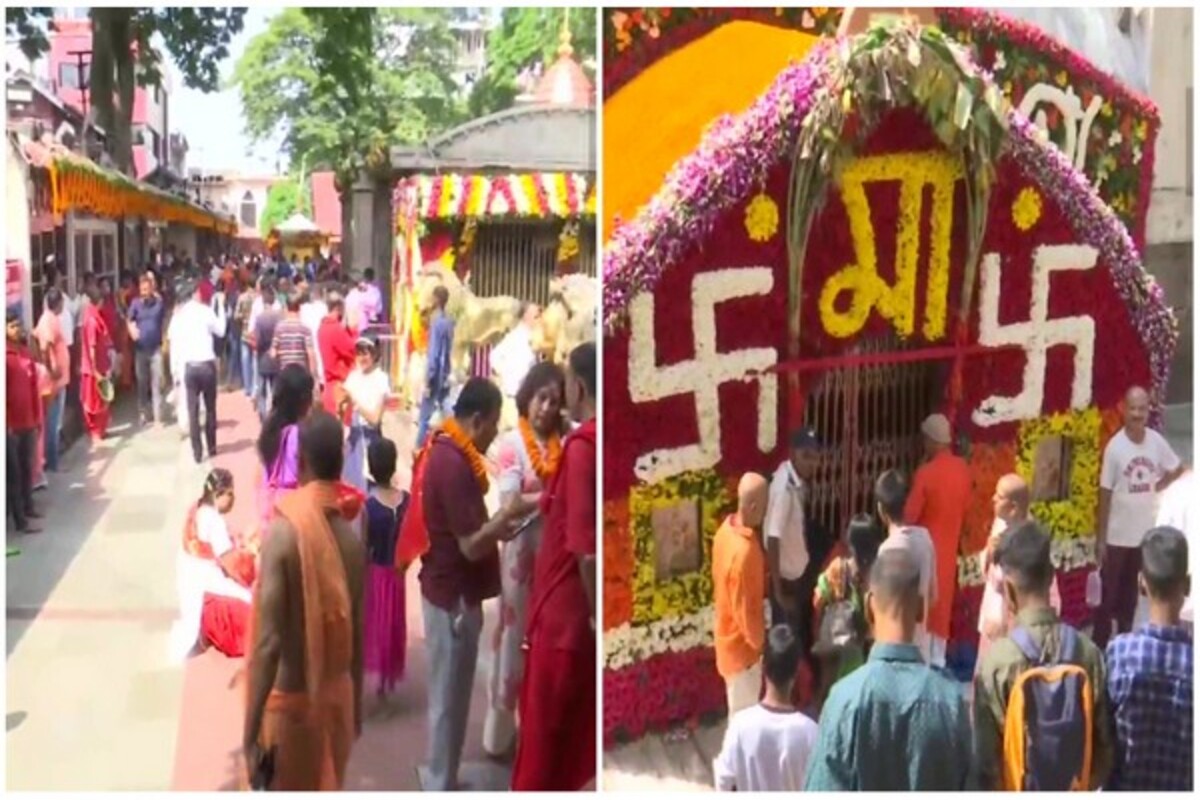2nd edition of Lok Samvardhan Parv to showcase UP’s rich arts and crafts in Delhi
The second edition of the Lok Samvardhan Parv is set to begin on January 27 in New Delhi, showcasing the exceptional arts and crafts of Uttar Pradesh.
Ramlila is organised extensively during Navratri in North India, particularly in Uttar Pradesh, Uttarakhand, Haryana, Gujarat, and Madhya Pradesh. During the Ramlila, the tale of Lord Ram’s triumph over Ravana is acted out. The effigies of Ravana are burned on Dussehra to commemorate the triumph of good over evil.

(ANI Photos)
Hundreds of devotees thronged Kamakhya Devi Temple here as the nine-day-long Navratri celebrations began on Monday.
As the entire country gets filled with immense fervour, devotees are rushing to visit various temples dedicated to Goddess Durga. One such temple of great importance is the ‘Kamakhya Devi Temple’ which is the centre for numerous devotees from various parts of the country.
Advertisement
Speaking to ANI, the head priest Kabindra Prasad Sarma said, “The Navratri has begun at Kamakhya temple from today. Kumari Puja has also been performed during Navratri. Today is Pratipada and one Kumari will be worshipped.”
Advertisement
He added, “Tomorrow is Dwitiya tithi and two Kumaris will be worshipped. In this way, 45 Kumaris will be worshipped till Navami. This tradition has been going on for many years. Durga Puja is celebrated for 15 days at Kamakhya temple – from Krishna Navami to Shukla Navami.”
One of the devotees, Santosh Saxena said, “We are here since 4 am in the morning. Today is the first day and it is considered auspicious. It’s believed that all wishes get fulfilled with the blessings of the goddesses.”
The Shardiya Navratri festival is dedicated to Goddess Durga and her nine avatars and today mark the first day of the festivity (Kalash or Ghatsthapna). The festival is celebrated with much fervour all across the country by Hindus.
During the nine-day Navratri festival, devotees worship Durga’s nine incarnations in order to obtain her blessings.
There is a goddess manifestation linked with each day of Navratri. During these nine days, people maintain ritualistic fasts, recite shlokas dedicated to each goddess, wear new clothing, offer bhog, and clean their homes. In their prayers, they ask the goddess for her favour in order to have prosperous, joyous, and fulfilled lives.
Ramlila is organised extensively during Navratri in North India, particularly in Uttar Pradesh, Uttarakhand, Haryana, Gujarat, and Madhya Pradesh. During the Ramlila, the tale of Lord Ram’s triumph over Ravana is acted out. The effigies of Ravana are burned on Dussehra to commemorate the triumph of good over evil.
In fact, on the tenth day of Navratri, also known as Vijayadashami, a large procession is organised during which clay figurines of Maa Durga are ceremoniously submerged in a river, sea, or ocean. Popular places to do this practice include West Bengal, Odisha, Assam, and Bihar. The most significant day for Maa Durga’s worship is thought to be the day of Durga Visarjan.
In India, Navratri is celebrated in a wide range of ways. Ramlila, a celebration in which scenes from the Ramayana are performed, is organised in North India, mainly in Uttar Pradesh, Uttarakhand, Bihar, and Madhya Pradesh. The burning of Ravana’s effigies marks the conclusion of the story on Vijayadashami.
Advertisement